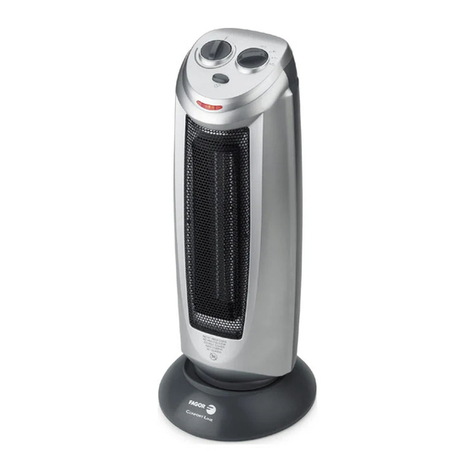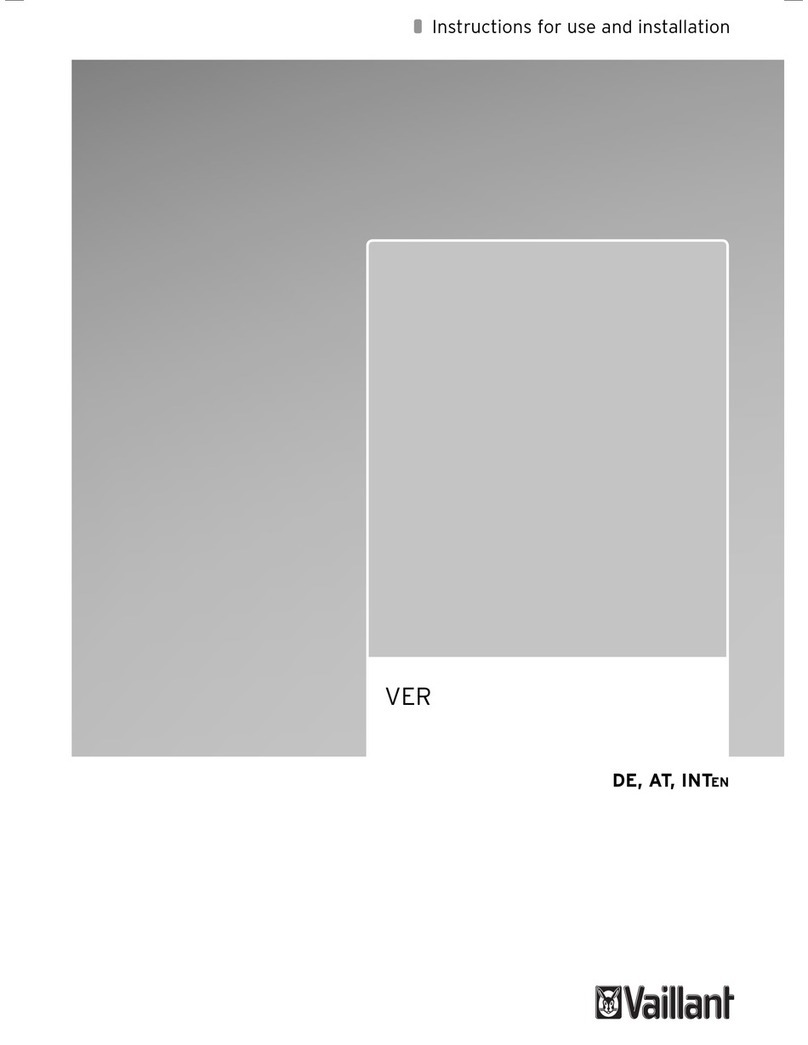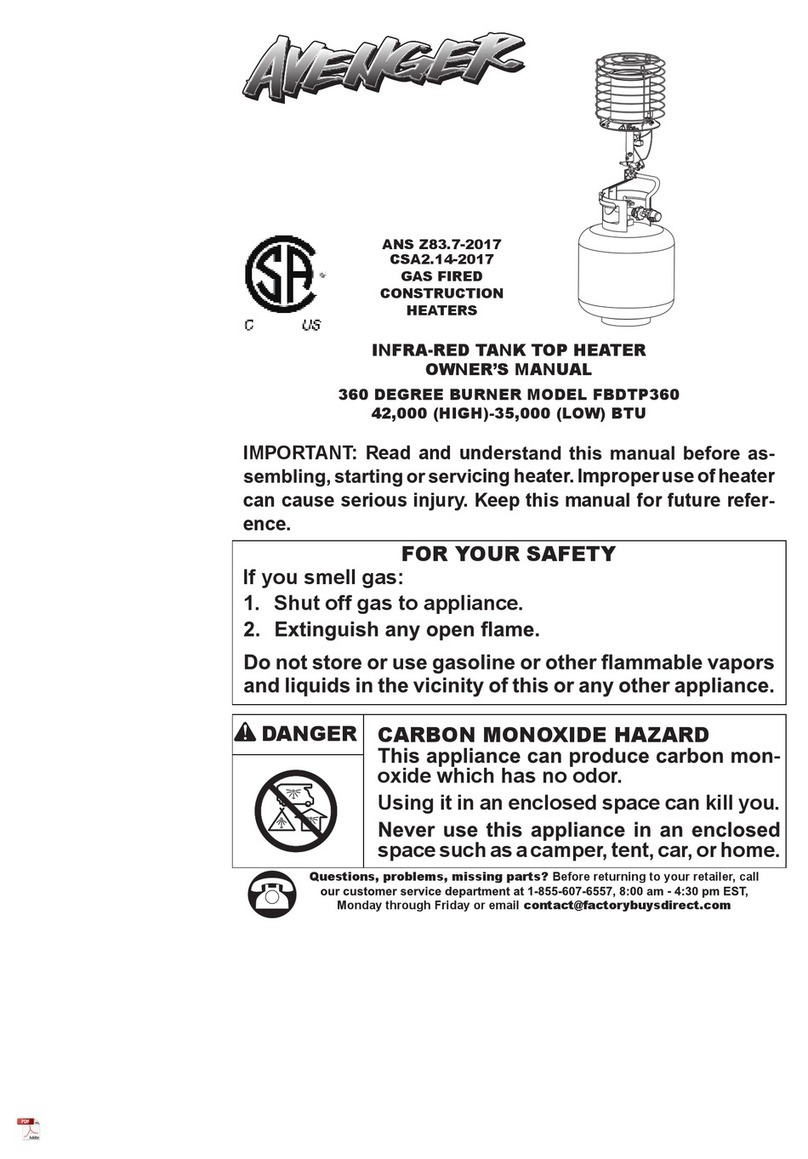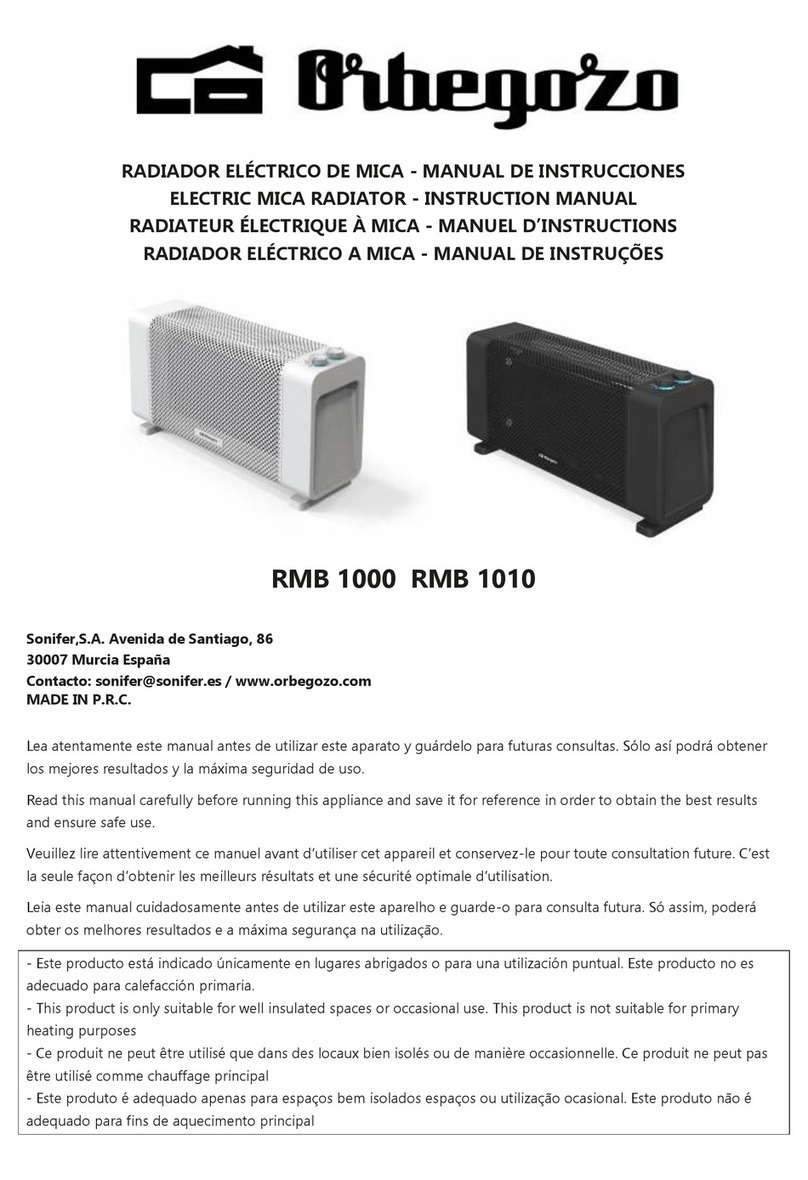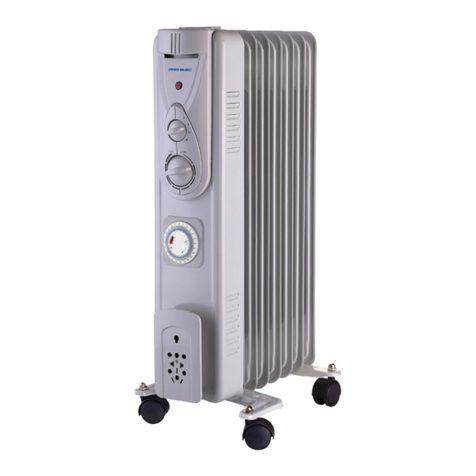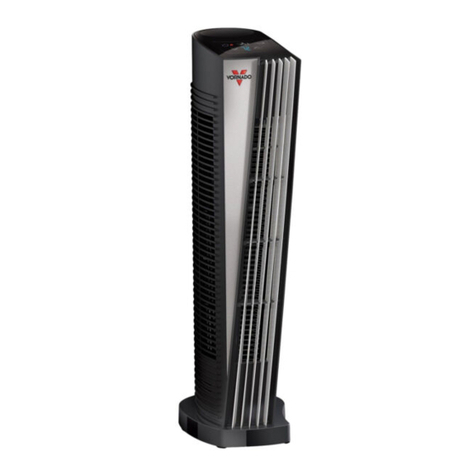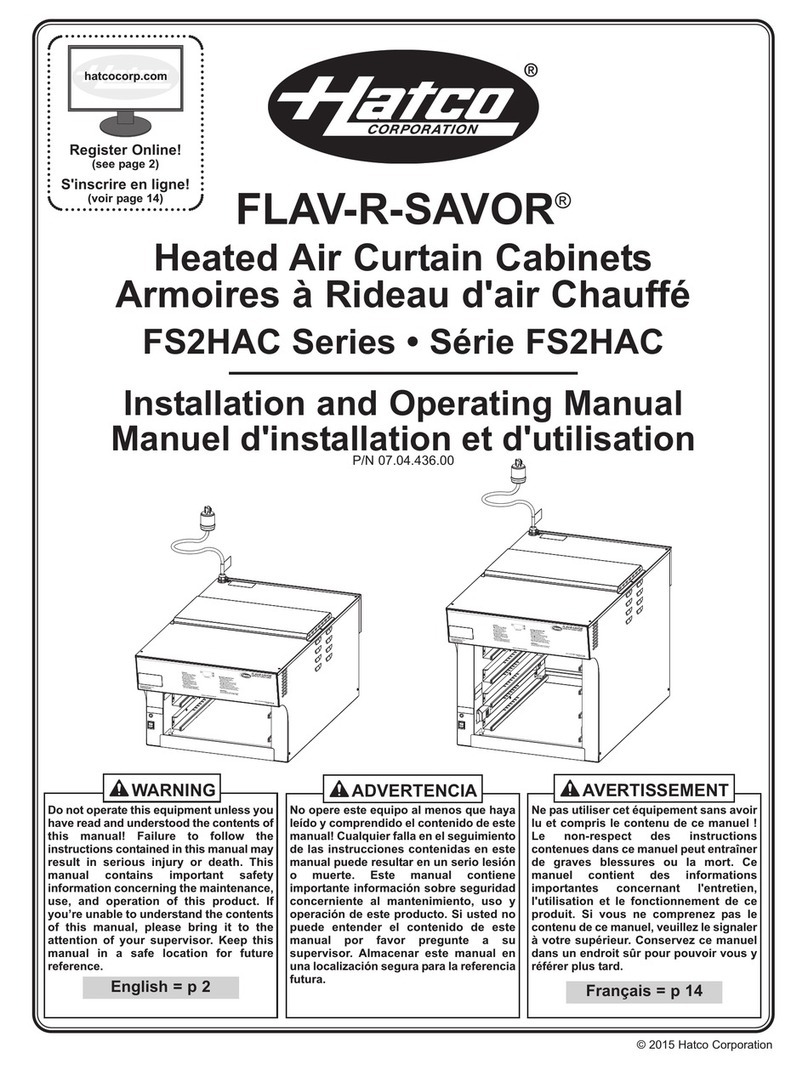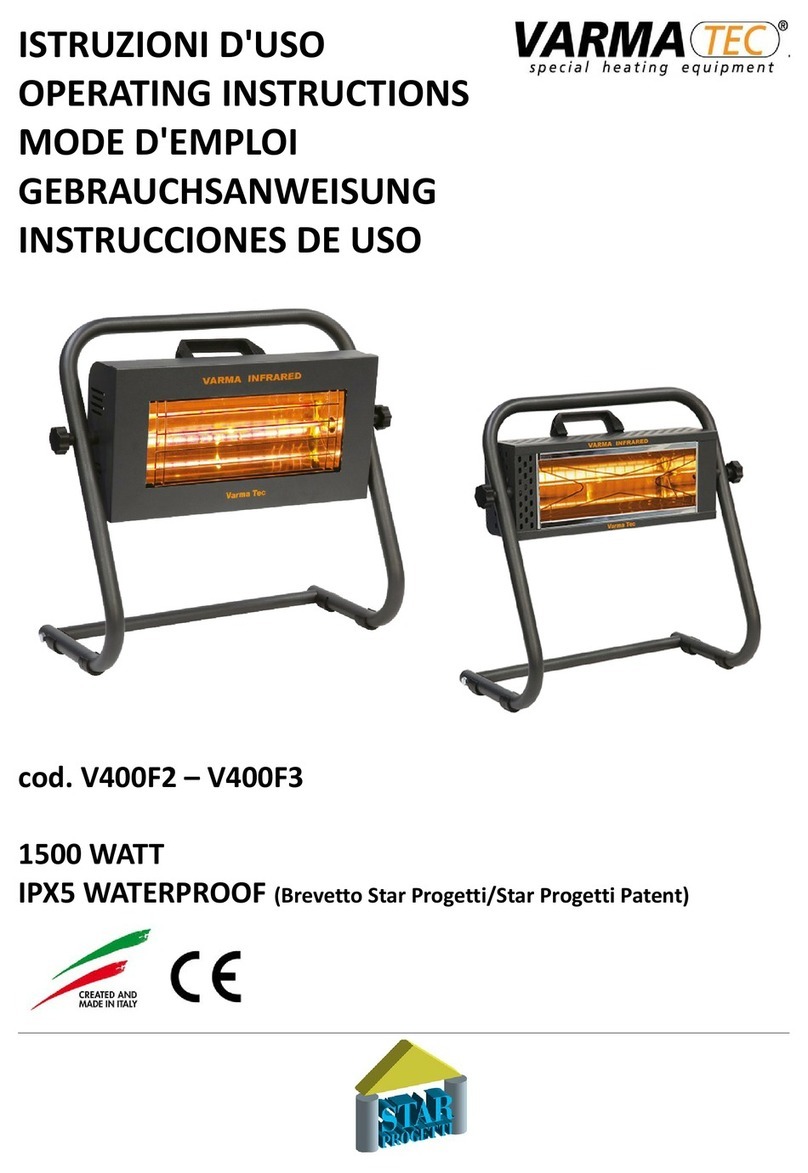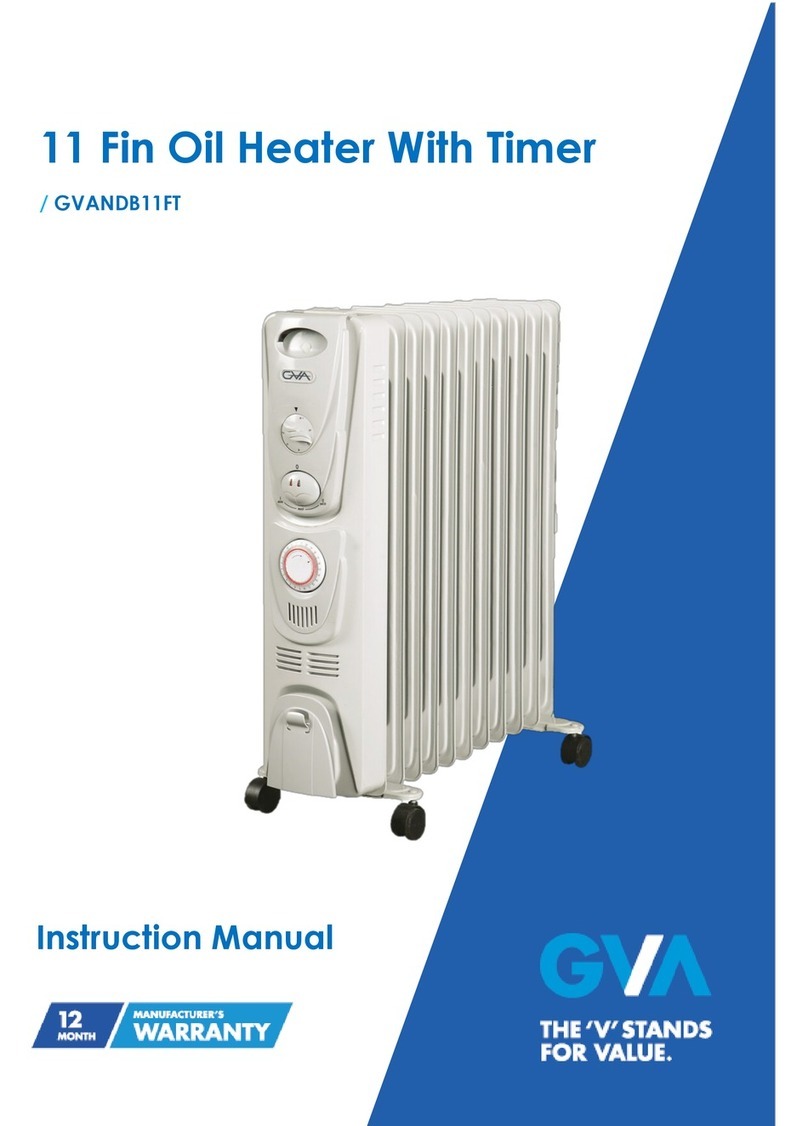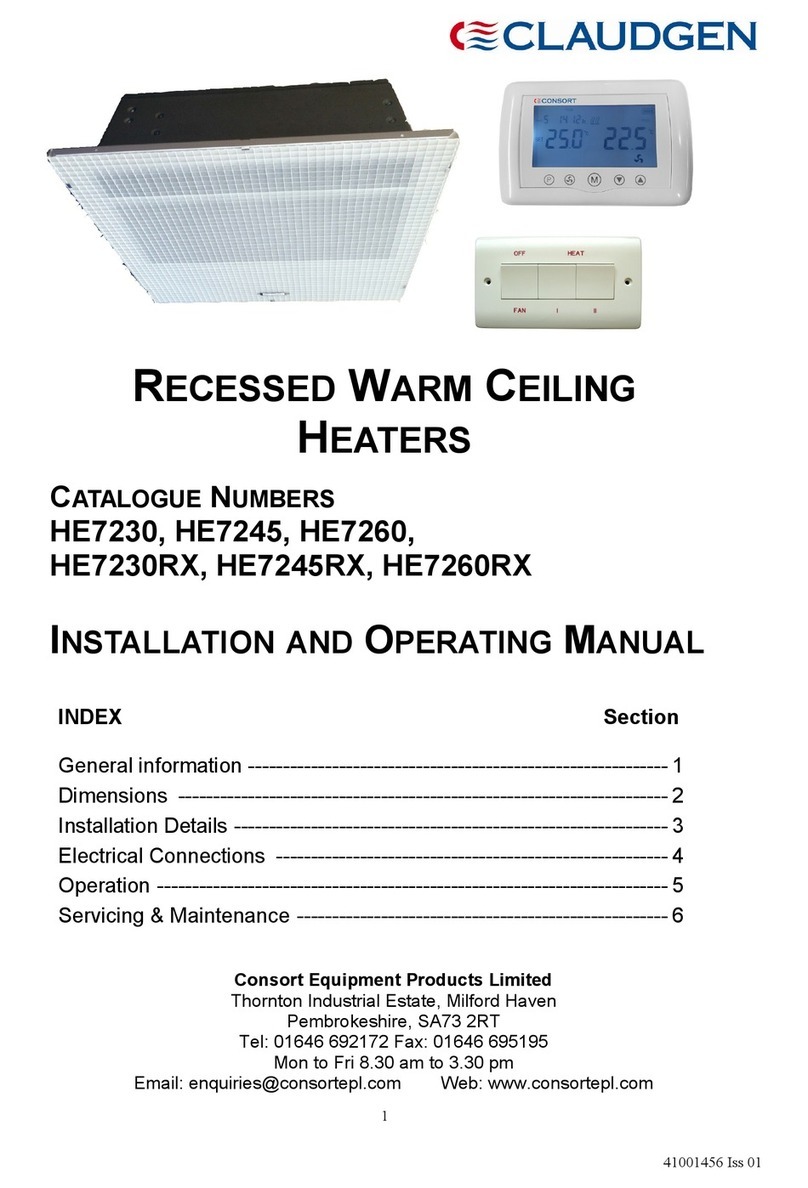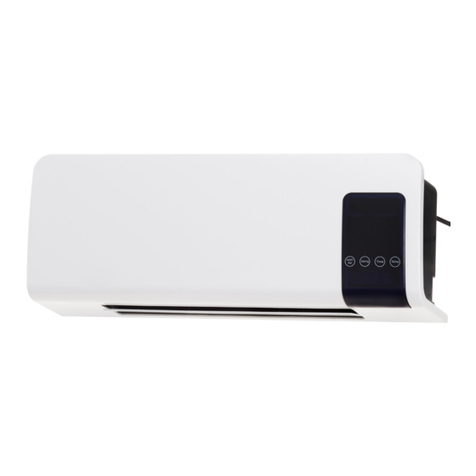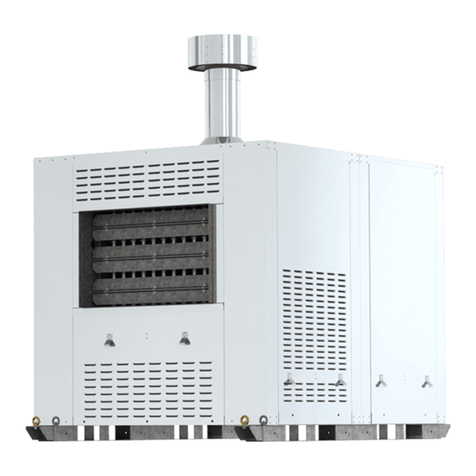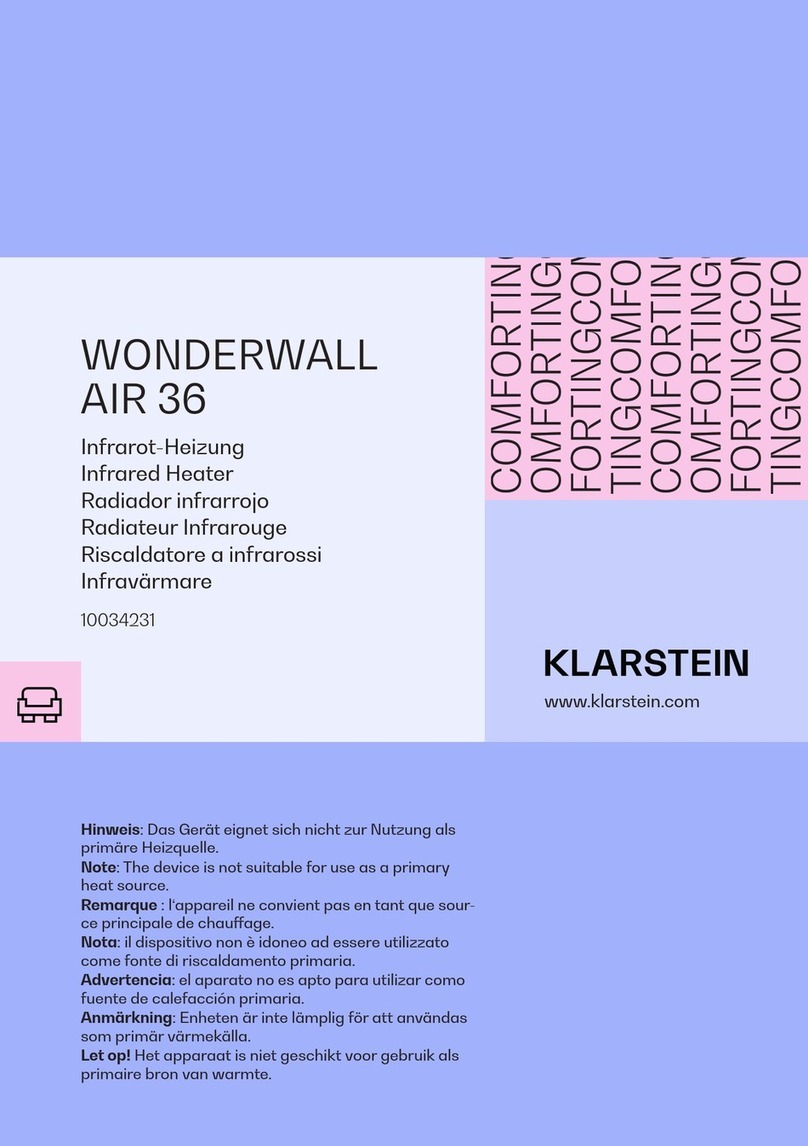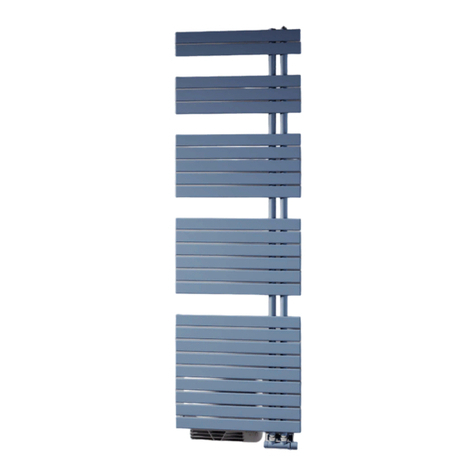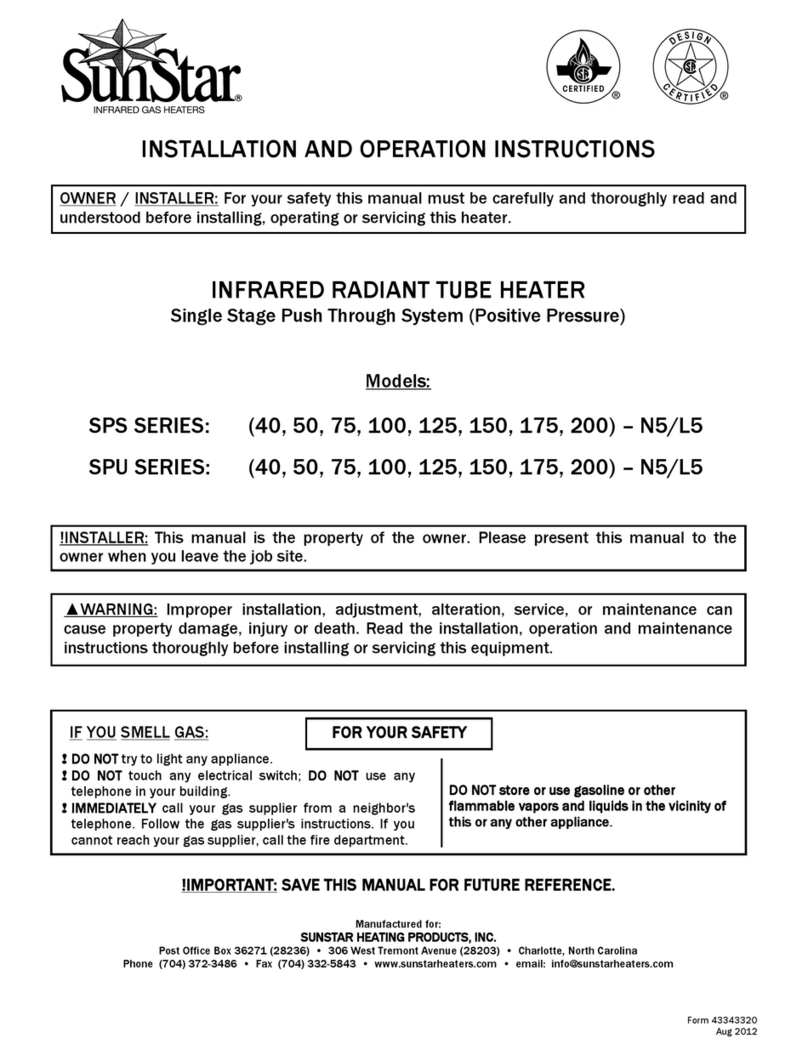STIHLER ELECTRONIC ASTOPAD DUO310 User manual

Instructions for use
ASTOPAD®
Patient warming system
STIHLER ELECTRONIC GmbH 70771 Leinfelden-Echterdingen Germany
DUO310
COV070
COV105
COV150
COV155
COV180
SOF2
SOF4
SOF5
SOF7
ROE4
ROE8
0315.7200.12, Rev.08, 03/2021

To be completed by the user:
Serial number
Registration number
Equipment location
Start-up date
Manufaturer:
STIHLER ELECTRONIC GmbH
Gaussstrasse 4
70771 Leinfelden-Echterdingen
GERMANY
Tel. +49 (0) 711-720670
Fax +49 (0) 711-7206757
www.stihlerelectronic.de
© 2021 STIHLER ELECTRONIC GmbH
STIHLER ELECTRONIC GmbH declares under its sole responsibility that this
product conforms to EC Directive 93/42/EEC on medical devices.
Notified body: DEKRA Certification GmbH, registration number 0124.

CONTENTS
1 Information about these instructions.................................................5
2 General information.............................................................................5
2.1 Guarantee conditions..................................................................................................................5
2.2 Liability .......................................................................................................................................5
2.3 Disposal of the equipment...........................................................................................................6
2.4 Information on battery disposal...................................................................................................6
2.5 Return of a used product.............................................................................................................6
2.6 Service information.....................................................................................................................7
3 Important safety information...............................................................7
3.1 Dangers......................................................................................................................................8
3.2 Warnings ....................................................................................................................................8
3.3 Cautions ...................................................................................................................................12
3.4 Notices .....................................................................................................................................13
4. Intended use......................................................................................14
4.1 Intended medical indications.....................................................................................................14
4.2 Contraindications......................................................................................................................14
4.3 Possible adverse effects...........................................................................................................14
4.4 Intended patient group..............................................................................................................14
4.5 Intended body part....................................................................................................................14
4.6 Intended user profile.................................................................................................................15
4.7 Intended environment of use/operation.....................................................................................15
5 Symbols..............................................................................................16
6 Product description ...........................................................................20
6.1 Introduction...............................................................................................................................20
6.2 Technical description................................................................................................................20
6.3 Components of the ASTOPAD..................................................................................................22
6.4 Control panel............................................................................................................................24
7 Operating states.................................................................................25
7.1 Standby mode...........................................................................................................................25
7.2 On mode...................................................................................................................................26
7.3 Heating mode output A and/or B...............................................................................................28
7.4 Increasing/decreasing the set temperature ...............................................................................29
7.5 Switching off an output (A or B).................................................................................................30
7.6 Operation independent of the mains (only for devices with a battery)........................................31
8 Installation..........................................................................................32
8.1 Initial start-up............................................................................................................................32
8.2 Installing the control unit ...........................................................................................................33

ASTOPAD®Instructions for Use
1 Information about these instructions
4
9 Getting started ...................................................................................34
9.1 Preparation for use ...................................................................................................................36
9.2 Starting the heating process .....................................................................................................39
9.3 Selecting a new set temperature...............................................................................................39
9.4 Switching off an output..............................................................................................................39
9.5 Switching off the ASTOPAD......................................................................................................40
9.6 Cleaning and disinfection..........................................................................................................40
10 Alarms and troubleshooting............................................................43
10.1 Low temperature alarm A1 (low priority alarm)........................................................................44
10.2 Overheating alarm A2 (low priority alarm)...............................................................................45
10.3 Time alarm A3 (low priority alarm)...........................................................................................46
10.4 Overheating alarm shut-off A4 (medium priority alarm) ...........................................................47
10.5 Sensor defect alarm A5 (medium priority alarm)......................................................................48
10.6 Heating defect alarm A6 (medium priority alarm) ....................................................................49
11 Information messages and troubleshooting..................................50
11.1 Battery status (only for devices with a battery)........................................................................50
11.2 Applied part temperature too low ............................................................................................50
11.3 Applied part temperature too high...........................................................................................51
12 Brief overview of operating states and alarms ..............................52
12.1 Overview of operating states...................................................................................................52
12.2 Overview of alarms.................................................................................................................54
13 Maintenance.....................................................................................55
13.1 Recurrrent tests ......................................................................................................................55
13.2 Replacing the battery..............................................................................................................56
14 Technical Data..................................................................................57
15 Conformity with international standards........................................60
16 Ordering information and accessories...........................................61
17 Guidelines and manufacturer’s declaration ...................................63

1 Information about these instructions
ASTOPAD®Instructions for Use
5
1 Information about these instructions
Carefully read the entire instructions for use be-
fore using the device.
Correct and safe operation can only be guaranteed if the in-
structions for use are observed.
Incorrect use can result in damage to the product or to other
property and/or personal injury.
Keep the instructions for use for future reference.
Only use the device for the intended purpose as described in
these instructions for use. Please refer to section
4 Intended use.
2 General information
2.1 Guarantee conditions
The guarantee period is 12 months. During this guarantee period, the manufac-
turer will repair or replace free of charge all defects caused as a result of material
or manufacturing errors.
Other damage is not subject to this guarantee. The guarantee does not include
cases of misuse or incorrect handling, use of force or damage caused by normal
wear and tear. This also applies to changes undertaken by persons who are not
authorised by the manufacturer and to modifications to the original condition.
If the equipment is damaged during the guarantee period, send the cleaned
equipment to the nearest sales point or directly to STIHLER ELECTRONIC
GmbH. The sender is responsible for any transport and packaging costs.
2.2 Liability
The manufacturer is only liable for the safety, reliability and performance of the
equipment
if all operating, servicing, and calibration procedures are carried out by trained
and qualified persons according to the procedures published by the manufac-
turer;
if only original spare parts are used to replace components as needed;
if the assembly and repairs are carried out by authorised personnel or an au-
thorised service centre;
if the electrical installations satisfy the locally applicable regulations and the
IEC/EN requirements and
if the equipment is used for its intended purpose and at a suitable location in
accordance with the instructions for use.

ASTOPAD®Instructions for Use
2 General information
6
2.3 Disposal of the equipment
Electrical devices are recoverable waste and should not be disposed of in domes-
tic waste at the end of their service life. Please follow the local rules for the dis-
posal of used products, or send the cleaned and disinfected equipment with a cor-
responding note to STIHLER ELECTRONIC GmbH or your closest sales point.
This will ensure the most cost-efficient and proper disposal of your old equipment.
Follow the national regulations on the disposal of medical devices.
2.4 Information on battery disposal
Batteries must not be disposed of in domestic waste. The user is obliged to en-
sure proper disposal. Returns can be made to public communal collection points
or wherever the batteries are sold.
The battery can be removed by loosening the 4 screws on the underside and
opening the housing.
2.5 Return of a used product
A report must be sent together with the equipment, detailing the precise reasons,
circumstances, and, if known, the cause of the return. To prevent transportation
damage, the equipment should be shipped either in the original packaging or in
other, well-protected packaging.
Transport regulations for returning devices with a built-in battery:
When returning the ASTOPAD DUO310 control units, it is essential to ensure that
the control unit is in a state in which it can be stored/transported (see section
7.6.3 Switch to storage/transport mode).
WARNING
Risk of infection!
Clean and disinfect the equipment after every use and before you return the equip-
ment for repairs.
NOTICE
The customer is responsible for the proper packaging and labelling of returns.

3 Important safety information
ASTOPAD®Instructions for Use
7
2.6 Service information
For service or technical support, please contact your local sales point or the fol-
lowing:
STIHLER ELECTRONIC GmbH Tel. +49 (0) 711-720670
Gaussstrasse 4 Fax +49 (0) 711-7206757
70771 Leinfelden-Echterdingen www.stihlerelectronic.de
GERMANY E-Mail: info@stihlerelectronic.de
3 Important safety information
These instructions for use define and refer to the following safety information.
DANGER
Describes a risk from a situation which, if not avoided, will result directly in severe
or fatal injuries.
WARNING
Describes a dangerous situation which, if not avoided, may result in severe or fatal
injuries.
CAUTION
Describes a dangerous situation which, if not avoided, may result in minor to mod-
erate injuries.
NOTICE
Indicates information considered important, but that does not relate to risks (e.g.
reference to property damage).

ASTOPAD®Instructions for Use
3 Important safety information
8
3.1 Dangers
DANGER
Explosion hazard!
Do not use the ASTOPAD patient warming system in an explosive environment or
in the presence of flammable anaesthetics.
3.2 Warnings
WARNING
Risk of injury!
Use of the ASTOPAD must be carried out under the supervision of a physician.
Read and observe all instructions, stickers, and accompanying documentation
that came with the ASTOPAD. Failure to observe the instructions, including warn-
ings and safety information, can result in incorrect handling, patient injury, injury
to users or medical personnel, damage to the device, or material damage.
Operate and service the ASTOPAD only in accordance with the procedures de-
scribed in these instructions and with the applicable standards, rules, and guide-
lines. The manufacturer shall not be responsible for the safety of users or patients
if any actions/procedures other than those published are carried out during opera-
tion, servicing, or repeated inspections.
The ASTOPAD may only be used by appropriately trained and medically qualified
specialists.
The ASTOPAD may only be serviced by appropriately trained and medically qual-
ified service personnel.
If the OR table top is tilted (adjusted through the longitudinal axis), there is a dan-
ger that the patient will slip off. The patient must be sufficiently secured against
slipping before the OR table top is tilted or otherwise moved out of the horizontal
position!
Due to the physico-chemical properties of disinfectants, please ensure that no
disinfectants accumulate beneath the patient. During use, the patient must not be
damp or even wet when lying on the ASTOPAD applied part. This presents a
chemical burn hazard.
When RF surgical instruments or endocardial catheters are used, the patient
must also be properly insulated. This insulation must not be damp. The equip-
ment manufacturer’s instructions for use must be observed at all times.
With transdermal drug applications (patches), the additional heat can increase
the uptake of the drugs and result in injury to the patient.

3 Important safety information
ASTOPAD®Instructions for Use
9
WARNING
Risk of injury!
In the case of arterial occlusion, the applied parts of ASTOPAD must not be used
distal to this area.
Overheating of ischemic extremities can occur when ASTOPAD applied parts are
used.
The ASTOPAD does not contain any parts the user can repair. Therefore, do not
attempt to repair the ASTOPAD yourself. Contact your local sales point.
Any repairs to the equipment may only be carried out by persons authorised and
qualified by the manufacturer.
Modifications to the ASTOPAD are not permitted.
When ASTOPAD COV applied parts are used as an over-blanket, please ensure
that they do not obstruct the patient’s field of vision.
Do not use the ASTOPAD until the following error conditions have been remedied
through appropriate corrective action:
- Damaged or worn cables, plugs, or connecting socket.
- Damaged housing, damaged or loose control panel.
- Damaged or missing labels/safety signs/warnings.
- Damaged outer cover of the ASTOPAD applied parts.
- No visual or audible alarm activated after switching on via the Standby button
(self-test defective).
- Button(s) which do not function correctly.
- ASTOPAD has been exposed to mechanical impact or extreme exposure to a
liquid.
- ASTOPAD has given someone an electric shock.
- ASTOPAD appears to have overheated.
- ASTOPAD has triggered an alarm shutdown.
The extension connection cable and the mains cable should not touch the patient
and should not hinder the treating personnel.
Do not cover the labelled SENSOR ZONE of the ASTOPAD applied part ROE
(patient, their extremities or objects).
If the ASTOPAD control unit with battery installed is not to be used for a longer
period of time, the battery must be removed.
Keep the ASTOPAD outside the MRI area. The ASTOPAD is not designed for
use in a magnetic resonance imaging (MRI) environment.
WARNING
Danger of overheating!
For patients from 35 to 90 cm in height, use only the ASTOPAD applied parts
COV070 and SOF7.
Do not use the ASTOPAD applied parts COV105, COV150, COV155, COV180,
SOF2, SOF4, SOF5, ROE4 or ROE8 for patients under 90 cm in height.

ASTOPAD®Instructions for Use
3 Important safety information
10
WARNING
Risk of infection!
Use aseptic procedures.
Clean and disinfect the ASTOPAD after every use and before you return the AS-
TOPAD for repairs.
Place the extension connection cable between the ASTOPAD applied part and
the ASTOPAD control unit so that it is protected from blood and bodily fluids.
Please ensure that the cables do not touch the floor.
It is recommended that a water-tight and absorbent barrier is always placed be-
tween the patient and the ASTOPAD applied part.
WARNING
Risk of decubitus ulcer!
Regardless of the treatment duration, aged, paralysed, comatose, and cachectic
patients are particularly at risk of decubitus ulcers. Critical points should therefore
also be constantly examined by medical personnel.
Never operate ASTOPAD applied parts when folded or bent under the patient.
Do not place the patient on the connection block of the ASTOPAD applied part.
When the ASTOPAD applied parts COV are used as an under-blanket, please
ensure that they are placed flat underneath the patient, are secured, and will not
crease.
In all surgical procedures, it is important to ensure that sufficient measures are
taken to avoid bed sores in accordance with the patient position.
The risk of skin irritation caused by an accumulation of surgical preparation solu-
tions under the patient may increase with warming; please ensure that the in-
structions for use for surgical preparation solutions are followed.
Reduce or eliminate the risk of skin warming under pressure-loaded bony protru-
sions.
Do not place ANY hard objects (such as connection cables, ECG cables, hard re-
usable neutral electrodes, patient fluid lines, etc.) between the ASTOPAD applied
part and the patient.
ASTOPAD applied parts COV can be wrapped around the patient. However, take
care that the applied part will not form creases.

3 Important safety information
ASTOPAD®Instructions for Use
11
WARNING
Risk of electric shock!
To prevent the risk of an electric shock, only connect the ASTOPAD to a mains
power supply with an earth conductor.
Do not use mains adapters that interrupt the earth conductor.
Do not open the ASTOPAD control unit casing.
If several pieces of equipment are combined or connected (e.g., in multiple
socket outlets), the sum of the leakage currents may not exceed the permissible
limits (please see the respective national regulations). Observe the requirements
as stipulated in IEC/EN 60601-1 regarding medical electrical equipment.
All electrical installations must conform to the applicable electrical standards and
the specifications defined by the manufacturer.
Before every use, check to make sure that the ASTOPAD control unit and the
ASTOPAD applied parts are undamaged.
The mains plug must be removed from the socket to fully disconnect the ASTO-
PAD from the mains.
WARNING
Risk of radio interference!
Use of the ASTOPAD in the immediate vicinity of other equipment or stacked with
other devices should be avoided, as this may result in incorrect operation. If use
in the form described is necessary nevertheless, the ASTOPAD and the other
equipment must be observed to confirm that they are functioning correctly.
Use of accessories other than those specified by the manufacturer of the ASTO-
PAD may cause increased electromagnetic interference or reduced electromag-
netic immunity and result in incorrect operation.
Do not use portable RF communication devices (radio equipment) (including their
accessories such as antenna cables and external antennas) within 30 cm of the
parts of the ASTOPAD and cables stipulated by the manufacturer. Failure to ob-
serve this may cause a reduction in the performance of the ASTOPAD.

ASTOPAD®Instructions for Use
3 Important safety information
12
3.3 Cautions
CAUTION
Risk of injury!
When installing the ASTOPAD control unit on an infusion stand, please observe
the instructions from the infusion stand manufacturer regarding maximum load
and tilting stability.
When the ASTOPAD applied parts are used on the OR table, the OR table must
be prepared according to the customary national regulations and guidelines.
Never insert pointed or sharp objects into the ASTOPAD applied parts or damage
the surface of the parts in any other way.
Damage to the ASTOPAD applied part may result in overheating. For this rea-
son:
- Only disinfect the ASTOPAD applied part with an alcohol-based disinfectant or
one of the approved disinfectants.
- Do not use bleach solution containing hypochlorite to disinfect the ASTOPAD
applied parts.
- Do not carry out cleaning or disinfection procedures other than those specified
in this manual without the express permission of the manufacturer.
CAUTION
Risk of hypothermia!
If an ASTOPAD alarm shutdown is triggered at one output, the heating process is
interrupted at both outputs.
If thermally conductive materials, such as water, gel, and similar substances, are
used and were not pre-heated, the patient’s body temperature may cool down as
a result once the ASTOPAD applied parts are switched off.
When ASTOPAD is used, the patient’s body temperature must be monitored at
regular intervals.
The temperature control of the ASTOPAD regulates and monitors the tempera-
ture of the applied parts, but not the patient’s body temperature.
If the ASTOPAD cannot be started or if the patient's temperature balance is insuf-
ficient, consider using alternative warming methods to prevent or reduce hypo-
thermia or to improve the patient's comfort.
When this product is used in combination with other heat sources, an overheating
alarm or an overheating alarm shut-off may occur on the ASTOPAD control unit.

3 Important safety information
ASTOPAD®Instructions for Use
13
CAUTION
Misinterpretation!
Shadows of the internal cables and sensors may be captured in diagnostic images
(CT, X-ray) taken when the patient is using the ASTOPAD applied parts. The im-
ages should be assessed by clinical experts to determine the quality and diagnostic
suitability of the image.
CAUTION
Risk of radio interference!
Due to the presence of electromagnetic interference, essential performance char-
acteristics may be unusable or only usable to a limited extent. This results in a
risk of hypothermia for the patient.
According to Standard IECEN 60601-1-2, medical electrical equipment requires
special precautionary measures in regard to electromagnetic compatibility (EMC).
The ASTOPAD may cause radio interference or may interfere with the operation of
equipment in close proximity. It may be necessary to take appropriate corrective
action, such as a realignment, a new configuration of the ASTOPAD or shielding.
3.4 Notices
NOTICE
The specified moisture resistance IPX2 for the ASTOPAD applied parts is en-
sured only when the connector
- is connected to a suitable extension cable, or
- the attached protective cap is used.
Actions to avoid damaging the ASTOPAD:
- Do not immerse the ASTOPAD control unit, the applied parts or the plugs of the
connection cables in liquid.
- Do not disinfect the ASTOPAD control unit and/or the applied parts with:
Steam (e.g. in autoclaves)
Hot air
Thermochemical cleaning solutions
- The ASTOPAD applied parts must not be disinfected with bleach solution
(hypochlorite or other agents containing chlorine).
- Do not use any cleaning or decontamination methods other than those recom-
mended by the manufacturer.
The customer is responsible for the proper packaging and labelling of returns.
The specified defibrillation protection is ensured only when the ASTOPAD applied
part is connected to the extension connection cable and the ASTOPAD control
unit.

ASTOPAD®Instructions for Use
4. Intended use
14
4. Intended use
Patient warming system with reusable applied parts, used for body warming.
4.1 Intended medical indications
ASTOPAD can be used in all areas used for medical purposes for prophylaxis
against the patient cooling down or for treating hypothermia. The individual AS-
TOPAD applied parts can be used as over-blankets and/or under-blankets, pads
(OR table pad) or a mattress. The OR table pads and mattresses are also used to
relieve pressure on the patient.
4.2 Contraindications
There are no known contraindications for patient warming.
4.3 Possible adverse effects
With proper use, no side effects are expected from the ASTOPAD. For longer sur-
gical procedures, there is an increased risk of decubitus ulcers. To reduce the risk
of decubitus ulcers, the additional use of a pressure-relieving pad is recom-
mended if the operating time exceeds two hours.
4.4 Intended patient group
ASTOPAD must not be used for patients with a height of less than 35 cm.
Only the ASTOPAD applied parts COV070 and SOF7 may be used for patients
with a height of between 35 and 90 cm.
For all other patients with a height greater than 90 cm, all ASTOPAD applied
parts may be used.
4.5 Intended body part
ASTOPAD applied parts COV are designed for use under or over the patient,
completely or partially (upper body and extremities) and the head (without field of
vision).
ASTOPAD applied parts SOF and ROE are designed for use under the patient,
fully or partially (upper body and extremities).
ASTOPAD applied parts may have direct skin contact. It is recommended that a
thin, water-tight and absorbent pad is used between the ASTOPAD applied part
and the patient.
ASTOPAD control unit and connection cables are not designed for direct skin
contact.

4. Intended use
ASTOPAD®Instructions for Use
15
4.6 Intended user profile
Only medically trained professionals may use the patient warming system.
4.7 Intended environment of use/operation
ASTOPAD may only be used in professional health care facilities (e.g.
hospitals, emergency care, dialysis, or near HF surgical devices).
The ASTOPAD can be used in surgical, intensive care or inpatient areas
in which there is a risk of cooling for the patient, or where the patient re-
quires external warming.
ASTOPAD is reusable, but must be cleaned/disinfected between uses.
The ASTOPAD control unit is designed to be secured to round pipes
(such as infusion stands) or on medical standard rails.
ASTOPAD is not designed for use in incubators.
ASTOPAD is not designed for use in a magnetic resonance imaging
(MRI) environment.
ASTOPAD may not be used in a potentially explosive environment or in
the presence of flammable anaesthetics.
ASTOPAD is not designed for use in a domestic environment or in veteri-
nary medicine.

ASTOPAD®Instructions for Use
5 Symbols
16
5 Symbols
Symbols and indications on the control panel
Standby button: Switches between Standby mode and On mode.
When the blue LED is lit, ASTOPAD is in Standby mode.
Start button: Starts the heating process.
Plus button: Temperature increase set value.
Minus button: Temperature decrease set value.
Stop button: Stops the heating process.
Alarm condition when the yellow LED is lit or flashing.
No ASTOPAD applied part is connected to the control unit.
Wait until the temperature of the applied part rises to reach the set
temperature.
Wait until the temperature of the applied part drops to reach the
set temperature.
Battery charge level
(control unit not connected to mains power).
Battery charge level
(control unit connected to mains power and battery is being
charged).
Battery status
(defective or incorrect battery).

5 Symbols
ASTOPAD®Instructions for Use
17
Where applicable, these symbols appear at the appropriate location on the AS-
TOPAD, on the packaging, on the type plate or in the accompanying documen-
tation.
Defibrillation protected applied part type BF in accordance with
IEC/EN 60601-1.
IPX2
Protected against dripping water in accordance with
IEC/EN 60529 .
Follow the instructions for use.
General warning/danger symbol.
Reference (part) number.
Serial number.
Batch designation.
Medical device.
Year of manufacture.
Manufacturer.
Information for the position of the locking ring on
the cable plug of the extension connection cable.
Battery.
Margins of the heated area.
The SENSOR ZONE symbol marks the area containing the sen-
sors for controlling the mattress temperature. This zone must not
be covered under any circumstances, not even partially.
Symbol on plug connector for potential equalisation in accordance
with IEC/EN 60601-1.
Dry at low heat.
Boil-proof, delicate wash cycle.
Do not use chlorine bleach.
Do not iron.
Dry-cleaning possible, with limitation of mechanical stress.

ASTOPAD®Instructions for Use
5 Symbols
18
Additional information.
Electrical devices are recoverable waste and should not be dis-
posed of in domestic waste at the end of their service life.
Batteries and rechargeable batteries are recoverable waste and
should not be disposed of in domestic waste at the end of their
service life.
Symbol for the permitted temperature range for storage and
transport.
Symbol for the permitted moisture range for storage and
transport.
Symbol for the permitted atmospheric pressure range for storage
and transport.
Transport upright with the arrows pointing up.
Keep dry.
Fragile, protect against impacts.
Packaging labelling for transporting lithium batteries according to
ADR SV 188 or IATA - DGR International Dangerous Goods
Regulations,Packing Instruction 965, II. SECTION II 43416.
Labelling for the individual shipment of lithium-ion batteries via
air freight according to IATA - DGR International Dangerous
Goods Regulations, Packing Instruction 965, II. SECTION II
II.2 Additional requirements 43418/v4.
This device conforms to EC Council Directive 93/42/EEC of
14 June 1993 concerning medical devices. The notified body,
DEKRA Certification GmbH (identification number 0124), moni-
tors the manufacturer’s quality management system.
75JA
MEDICAL –GENERAL MEDICAL EQUIPMENT AS TO ELEC-
TRICAL SHOCK, FIRE AND MECHANICAL HAZARDS ONLY
IN ACCORDANCE WITH standards ANSI/AAMI ES60601-
1:2005/(R) 2012 and A1:2012, C1:2009/(R)2012 and
A2:2010/(R)2012,
CAN/CSA-C22.2 No. 60601-1:14. Control No. 75JA.
Tilt of the OR table top.
Acoustic alarm signal.
No acoustic alarm signal.

5 Symbols
ASTOPAD®Instructions for Use
19
Prohibited: Do not cover SENSOR ZONE - risk of overheating!
Prohibited: Do not clamp ASTOPAD applied parts - risk of dam-
age and possible overheating!
Prohibited: Never pierce the ASTOPAD applied parts with
pointed or sharp objects - risk of damage and possible overheat-
ing!
Prohibited: Do not disinfect with hypochlorite solution.
Chlorine and peroxides and all other oxidising disinfectants have
a negative effect on the materials, therefore the use of these dis-
infectants is not recommended. Product life is significantly short-
ened by disinfectants of this kind.
Prohibited: Keep the ASTOPAD outside the MRI area.

ASTOPAD®Instructions for Use
6 Product description
20
6 Product description
6.1 Introduction
The ASTOPAD consists of a control unit and optionally one or two applied parts
(blankets, pads, OR table pads or mattresses).
WARNING
Danger of overheating!
For patients from 35 to 90 cm in height, use only the ASTOPAD applied parts
COV070 and SOF7
Do not use the ASTOPAD applied parts COV105, COV150, COV155,
COV180, SOF2, SOF4, SOF5, ROE4 or ROE8 for patients under 90 cm in
height.
6.2 Technical description
The ASTOPAD control unit can be secured to a round pipe (e.g. infusion stand) or
a medical standard rail.
The ASTOPAD control unit has two outputs (connecting sockets) A and B for con-
necting the ASTOPAD applied parts. The required set temperature of each con-
nected applied part can be selected, independently of one another, in a range
from 32.0°C to 39.0°C in 0.5°C increments. Optionally, the system can also be
operated with only one of the outputs A or B connected. The selected set temper-
ature and the actual temperature of each applied part are displayed on the control
panel.
The ASTOPAD control unit can also be operated via the battery option, independ-
ent of the mains. With battery inserted, operation is possible for about 2 hours in-
dependent of the mains.
With the exception of the COV155 heating blankets, which were exclusively de-
signed as blankets for the upper body, the ASTOPAD applied parts COV can be
used as over-blankets for warming the patient from above and/or as under-blan-
kets for warming the patient from below.
The heated, pressure-relieving OR table pad ASTOPAD applied part SOF or ROE
offers a combination of hypothermia and decubitus prophylaxis.
The key component of the ASTOPAD applied part SOF is a visco-elastic foam,
combined with a dynamic foam base for the best possible decubitus prophylaxis
on the OR table.
The special ASTOPAD applied part ROE is X-ray permeable and based on an op-
tionally 40 mm or 80 mm thick visco-elastic foam with a maximum sensor-free
zone.
This manual suits for next models
11
Table of contents
